In pictures: Wilkinson’s live setup revealed
The synths, drums and guitars that power his live sound
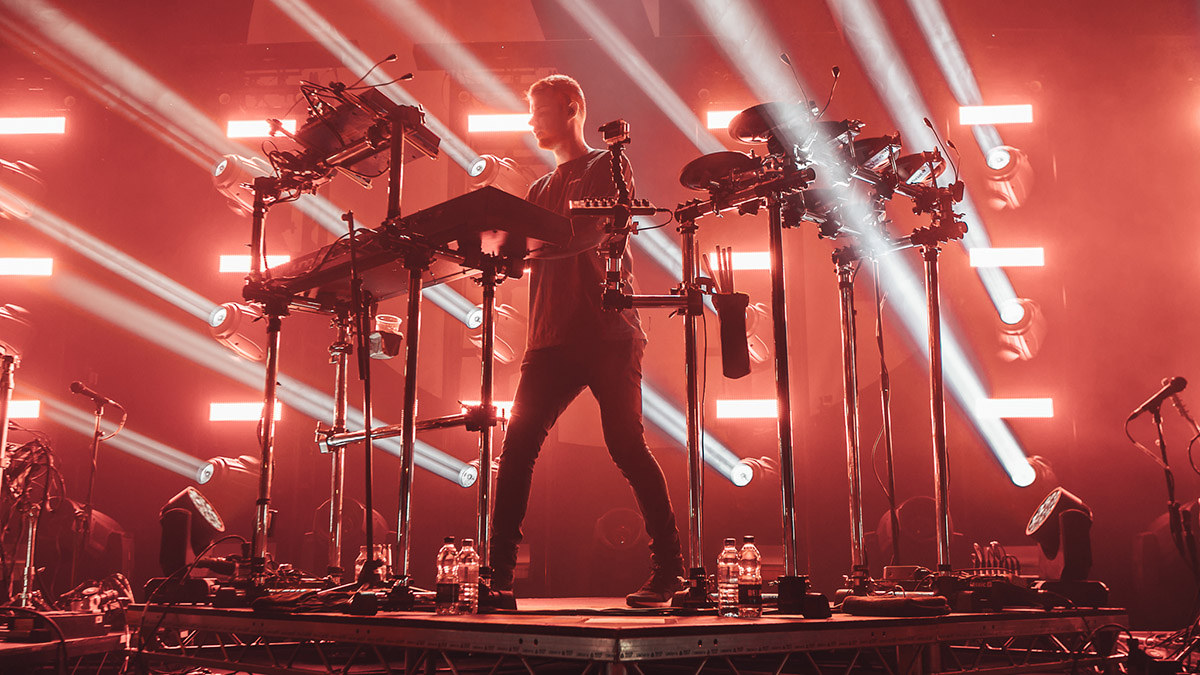
Mark Wilkinson
Signed to Andy C’s RAM Records, British drum & bass producer Mark Wilkinson’s career lifted off in 2013 with the top 10 single Afterglow, swiftly followed by his debut album Lazers Not Included. Reaching No. 2 on the UK dance chart, the album’s success cemented Wilkinson’s reputation as one to watch as he embarked on a sell-out UK tour.
Following his initial success, a raft of single releases have racked up over 1 million sales, while remixes and collaborations surfaced for big dance hitters including Chase & Status, Naughty Boy and Nero.
Wilkinson’s latest release, Sweet Lies featuring Karen Harding, premiered as The Hottest Record In The World on BBC Radio 1, and is the first to be lifted off his forthcoming album, Hypnotic, set for release in April.
Wilkinson recently brought his live show to London’s Camden Roundhouse, where the drum & bass maestro invited us to learn about his live setup...
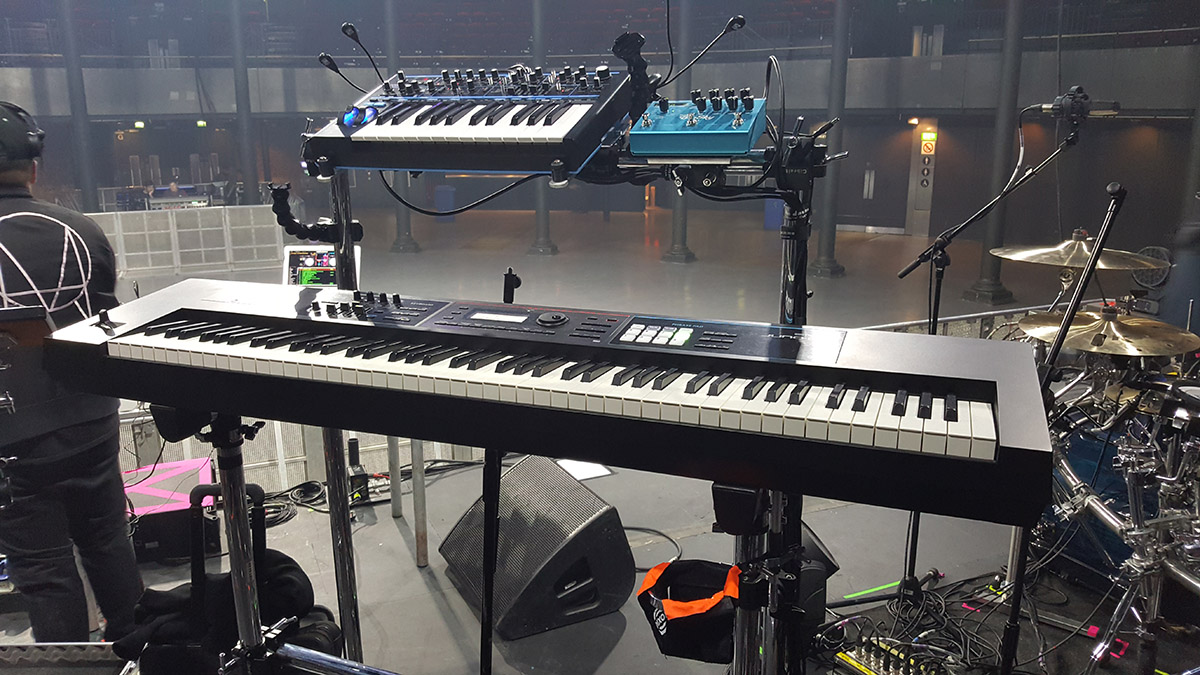
Ableton Live
“So to give an overview of our live set up, we break down the backing tracks using Ableton and manipulate them using a Novation controller.
“I use bleeps in a lot of my tunes and my melodies are quite percussive, so we decided to break them down across some Roland PD-8 drum pads. I’ll use the Juno-DS88 piano for all the tracks that feature piano and play it live, but what I’ve tried to do is replicate the sounds of the actual tracks.
“So I use Logic to create the music and programme the DS-88 to get the sounds. As we move through the set, Tom [Cane] has got everything set up so that we can switch patches through MIDI and play keys off Ableton via MIDI.
“For a few of the tracks, we’ve also got patches running through the Novation Bass Station.”
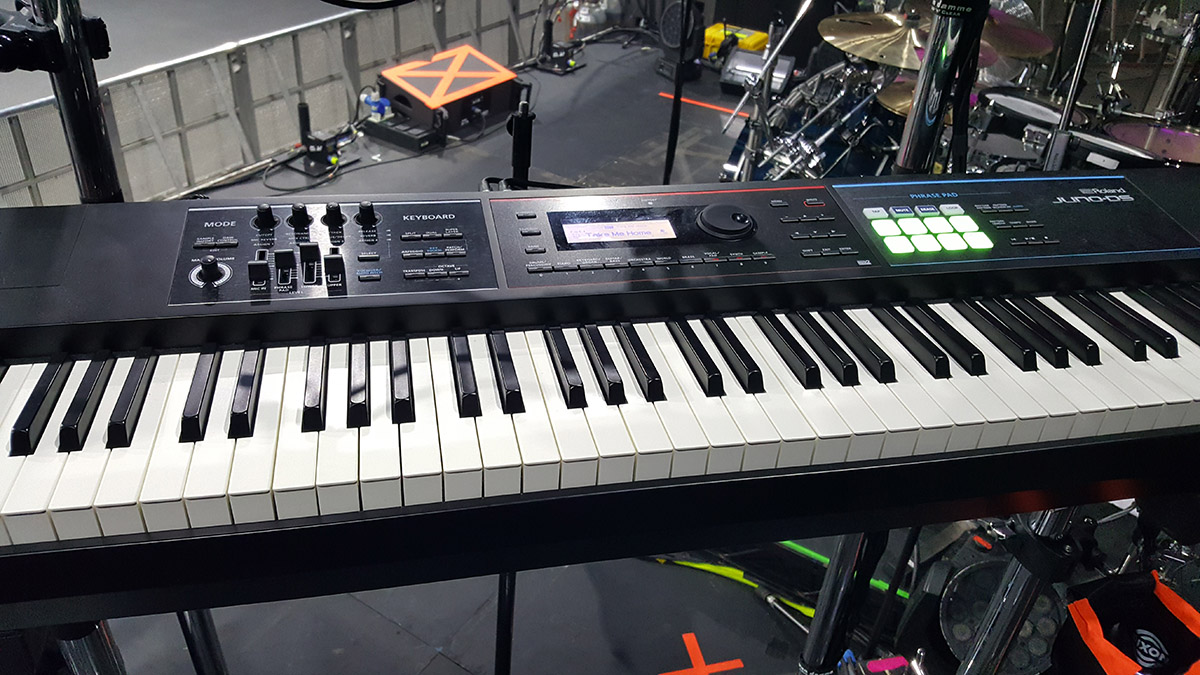
Roland Juno-DS88
“The live show has grown from being more about triggering things on Ableton to using live keys, and the Juno is a great piano for replicating sounds.
“I actually tried loads of different pianos, but once you get your head around the user interface, the DS88 is really good for replicating piano sounds.
“It’s quite difficult to work through, but you can manipulate the cut-offs and there’s probably about 40 or 50 effects that you can use too.
“You’ve got cut-off, ADSR, chorus, delay and reverb for manipulating the sounds to get them closer, but there’s loads of distortion plugins on it too.
"As soon as I started playing with those it was like, right, not only can I play a piano from the track Afterglow, which is beautiful, but I can also play some dirty reese-sounding drum and bass sounds that are amazing.”
“It’s a great bit of kit, and it’s really good to use with Ableton for sending MIDI. Tom spent hours and hours working out how we could map it so that, as I play each track, I can just see the dial change signals coming in.”
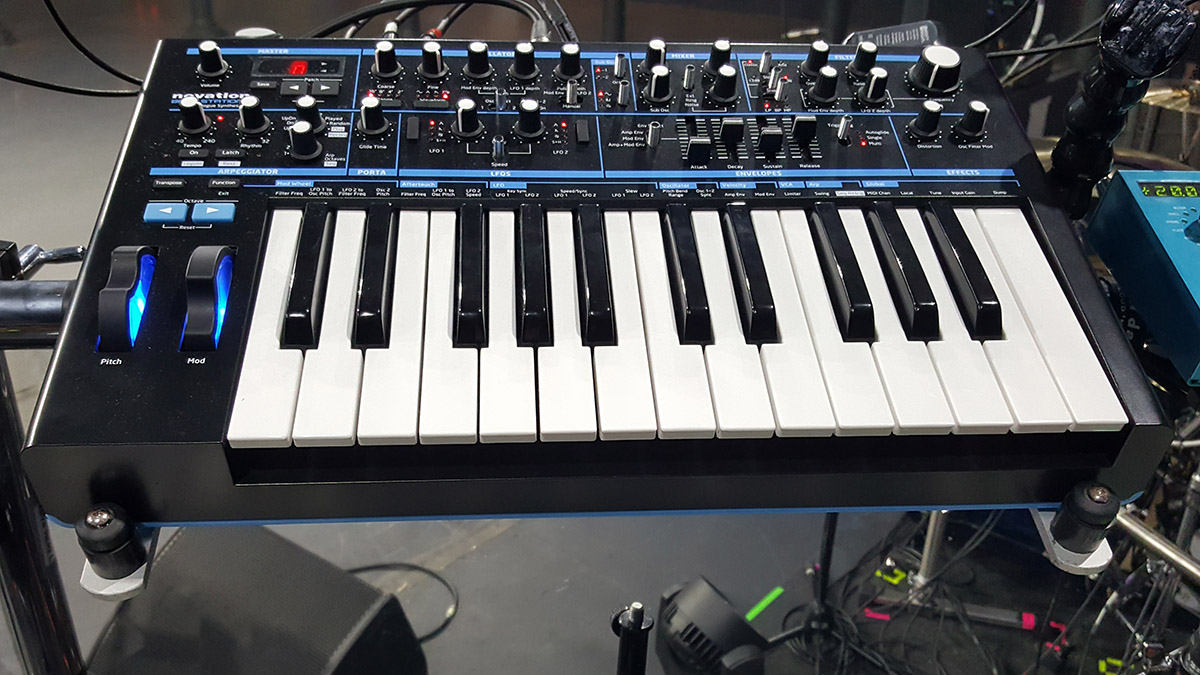
Novation Bass Station 2
“So this is the Novation Bass Station 2, which I’ve used in the studio a fair bit as well. It’s primarily for bass sounds but I use if for leads as well, especially on the song Wash Away.
“Then I run it through my BigSky FX box. It’s really used for creating more of the analogue sounds. Even though it’s digital, it has loads of effects that you can play around with.”
“This machine is really nice for the simpler waveforms, like making a little growly womp sound. It has so much scope, so we’ve tried to match it as best as possible with anything that I made in the studio using Massive or Serum soft synths in Logic.
“It’s basic, but a lot of the sounds are really nice.”
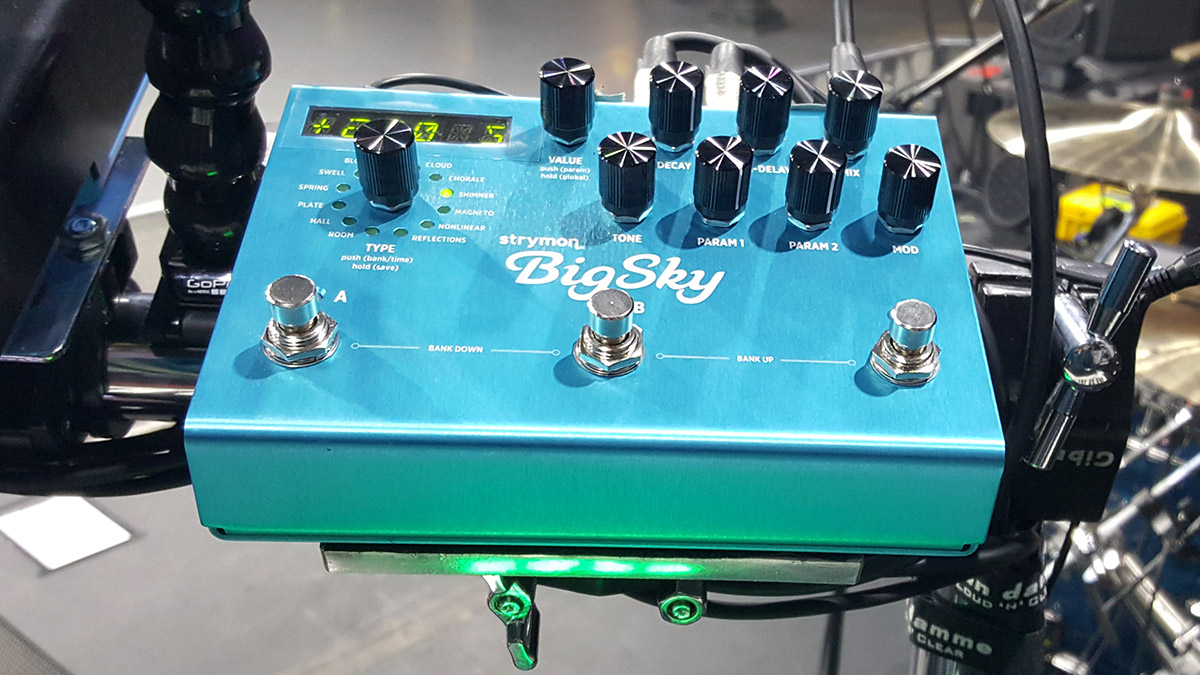
Strymon BigSky
“This is actually what my guitarist got me - it’s a guitar pedal. The sounds come out mono and then we send them into the BigSky and get all these different reverbs.
“It just makes everything sound amazing.
“It has a massive reverb and the shimmer’s really nice. If you’ve used Valhalla reverbs, then this is like the real thing - you can create an atmosphere pretty instantly.
“When we break the set down and play the BigSky on its own, it makes everything sound great.”
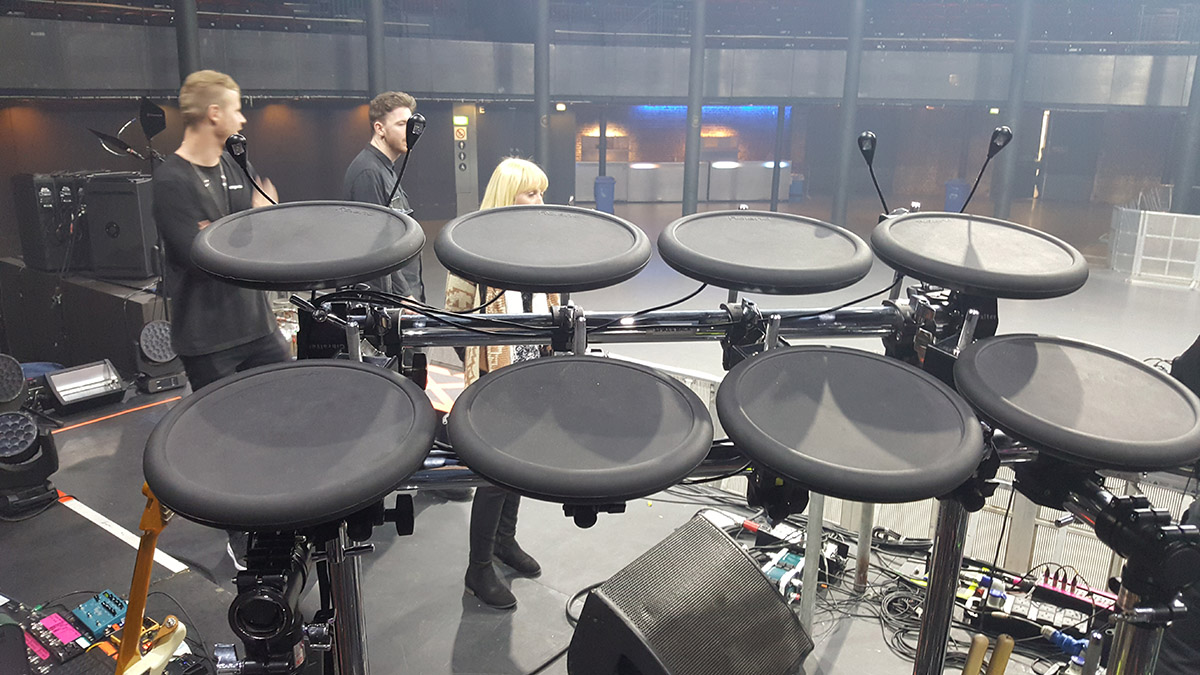
Roland PD-8
“They do what they’re meant to; you can smash them as hard as you can or hit them lightly.
“Because I use loads of bleep sounds and percussive melodies, we run the PD8 through the drum rack in Ableton so they’re all mapped.
“These are all going through the Alesis Trigger IO - a trigger to MIDI converter, so we get the pads to spit out MIDI notes and send them to Ableton through this."
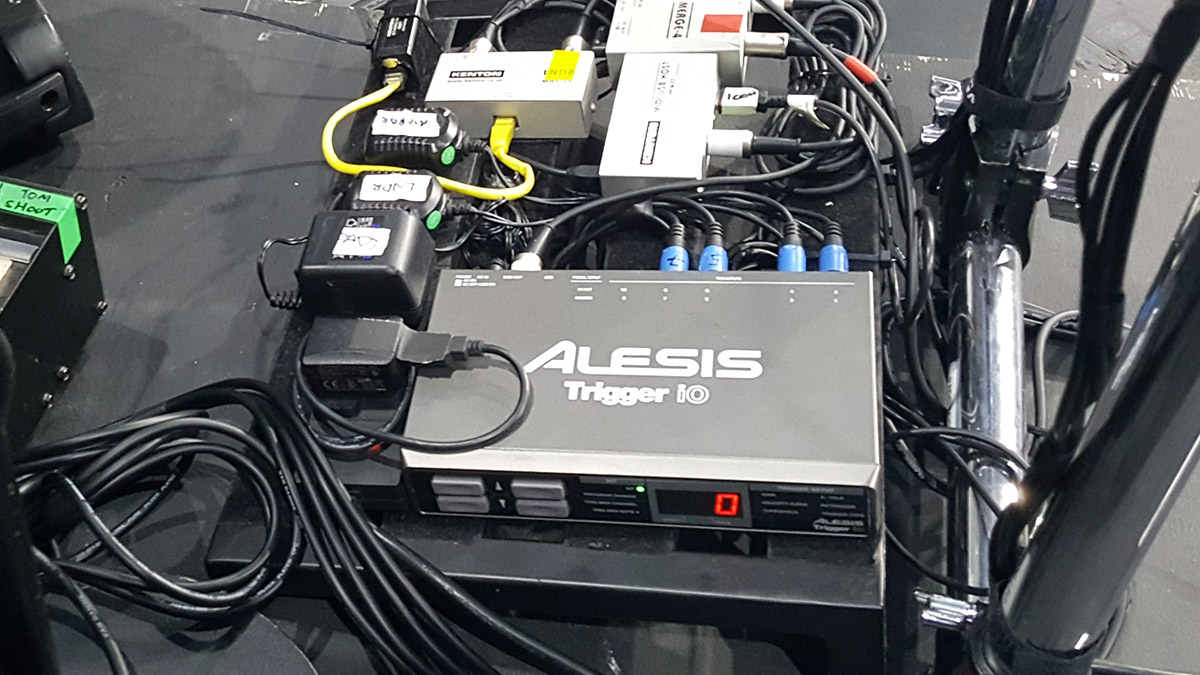
“As we go through the tracks, the pads change. There’s quite a lot to remember seeing as the pads don’t actually change in appearance, but it’s all muscle memory now and we rehearsed for weeks and weeks.
“Sometimes I look at Tom by the Ableton rack and get these blank moments, but we’ve tried to make it feel like we’re in the studio really.”
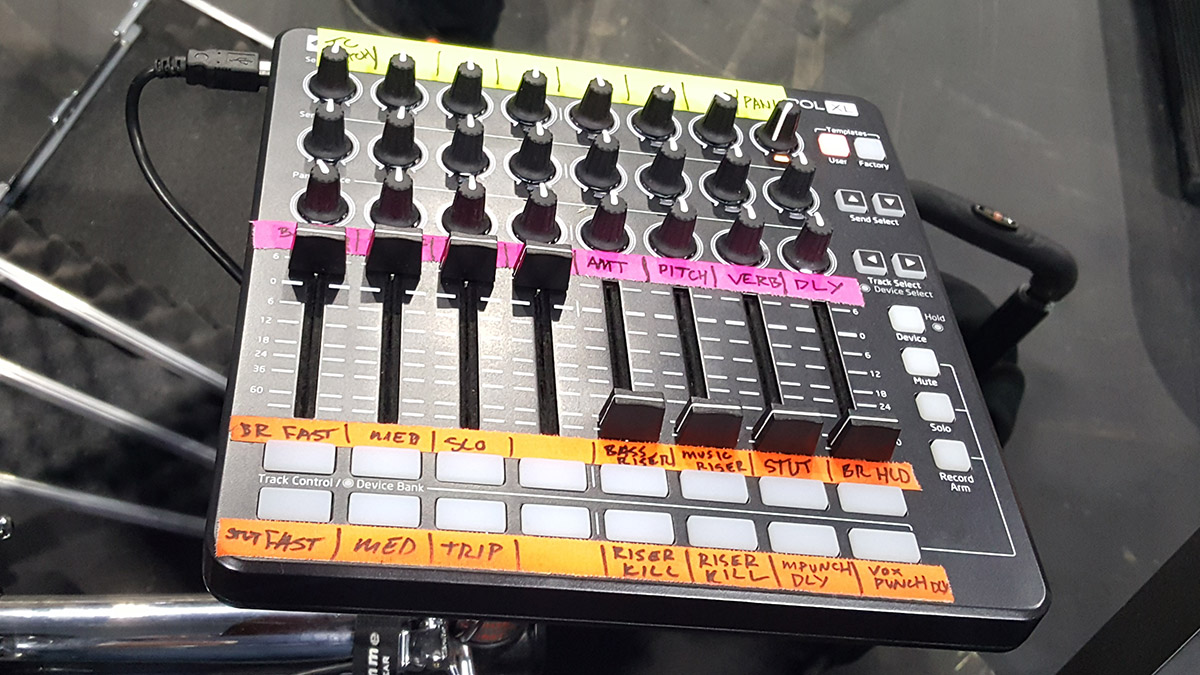
Novation LaunchControl XL
“The Novation’s got reverb sends, deIay sends and delay with pitch manipulation on it, so I can manipulate the bass and some of the vocals.
“It’s all assignable in Ableton, and that’s why we use Ableton. For messing about with backing tracks and general audio manipulation, everything runs really well with it.
"I don’t use Ableton in the studio, but I’m considering moving over - although Logic’s definitely more popular for mixing down.”
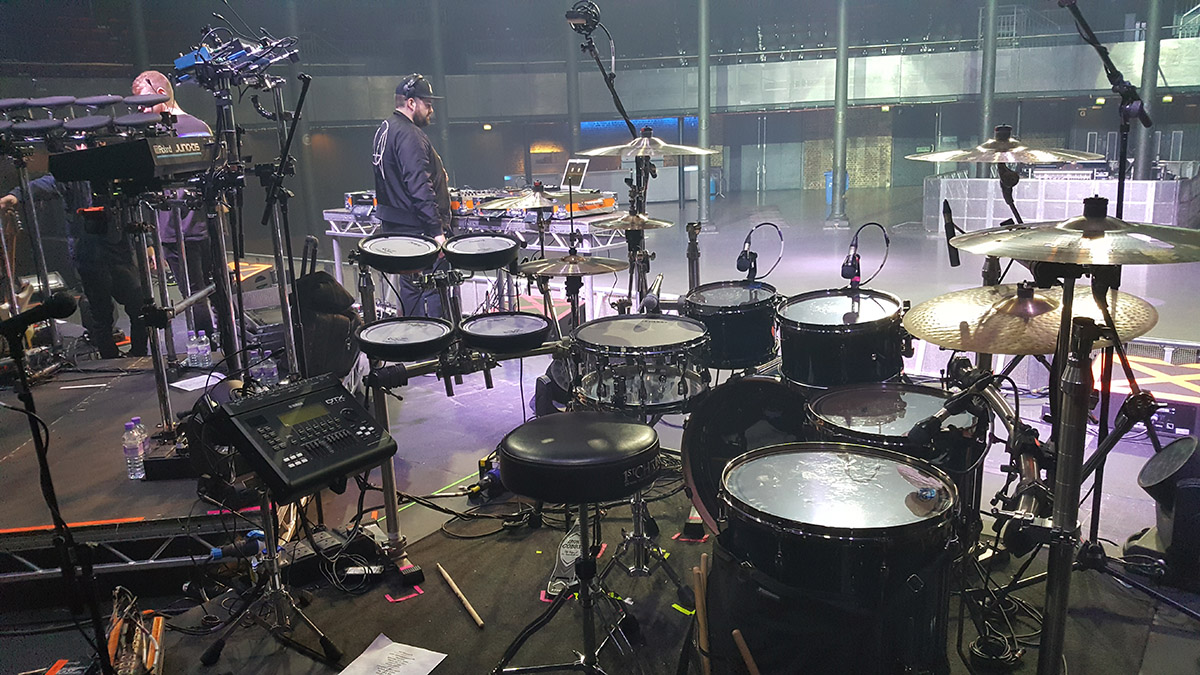
Oli Wiseman - Drums
Oli: “So I’m using a Yamaha DTX drum sampler. I’ve basically got a normal acoustic kit set up on a rack, and down beside my kick drum I’ve got two extra kick drum triggers because some of the new tracks have got different kick samples.
“What we’ve done for some of the tracks is bounce out the samples, so Mark or Tom will give me the samples and I cut them up, put them in the DTX and blend the drum sounds with the acoustic kit so a lot of the fills are playing with an acoustic vibe.
“For the choruses, where the drum and bass production has to be bang on, we’re playing electronic sounds with cymbals over the top of them. It’s like two kits in one really.”
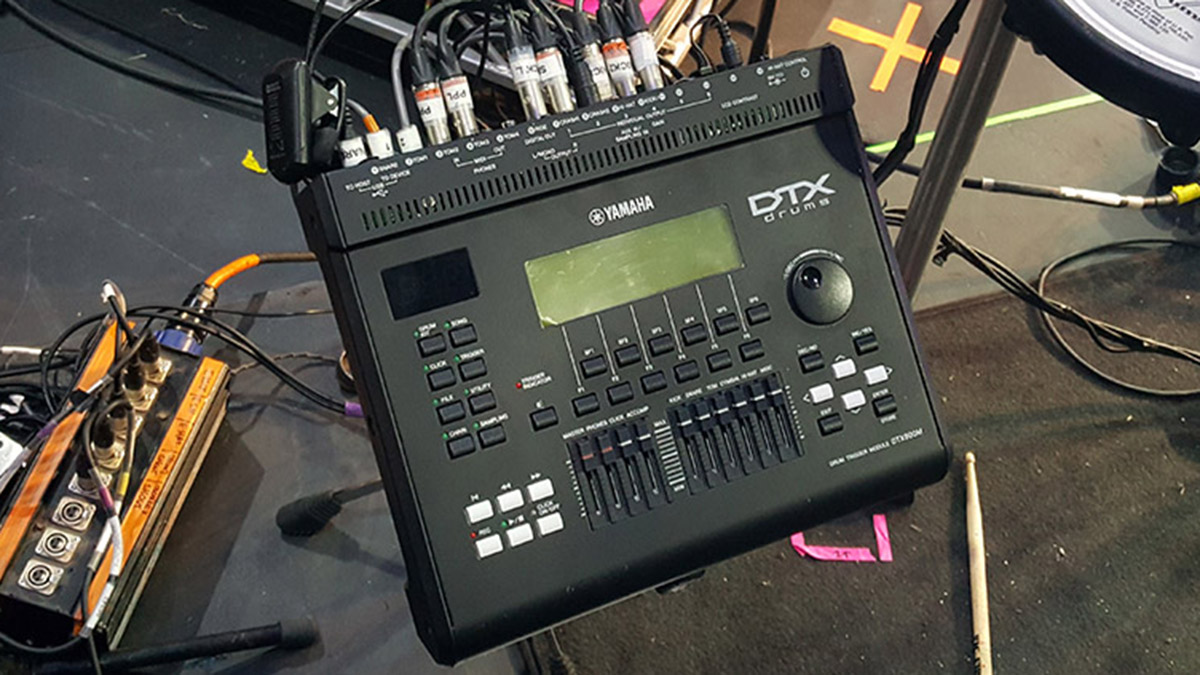
“I think tuning is a big thing in terms of making these drums sit really nicely with the electronic sounds. So, for me, it’s about finding the right sort of drums.
“We’re fortunate to be sponsored by Tama, so we sat down with them and had a chat about what I wanted to create for this live set.
“We came up with this idea of using really short stack toms, which really lend themselves to electronic music because they’re shorter and snappier.”
“Cymbal choice is key as well, because if you just have a basic rock drum kit, big clangy cymbals can sometimes work, but you also need sounds that create frequency levels that really separate the drums from the electronics.
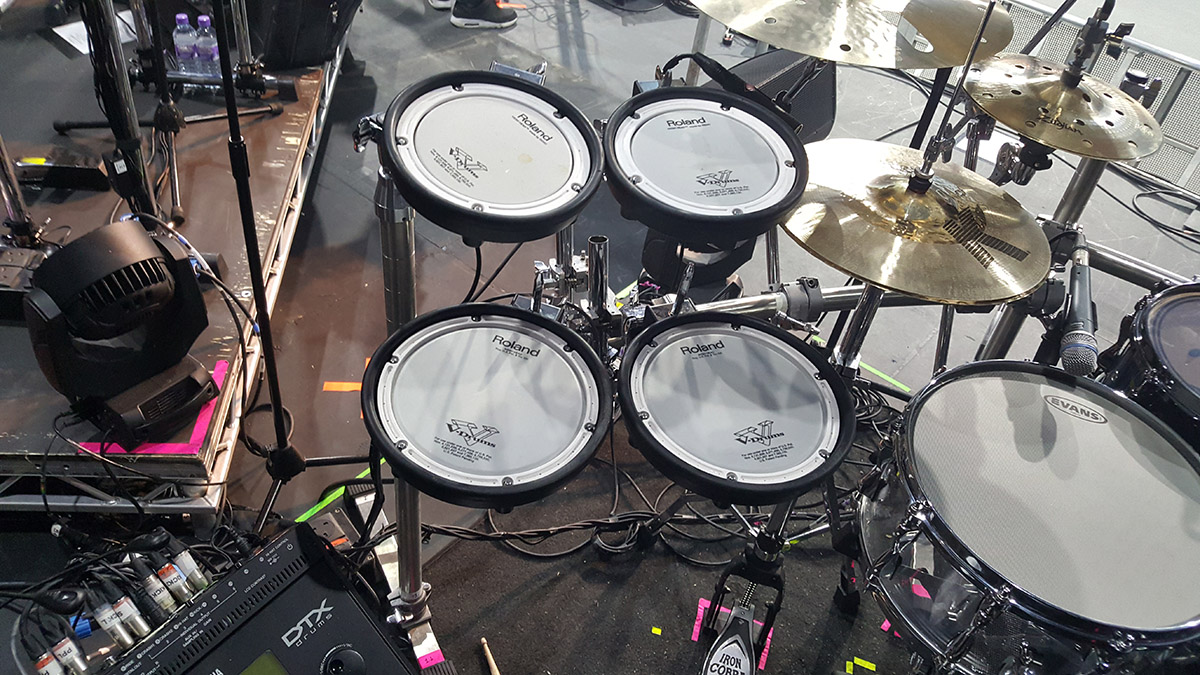
“If you go for cymbals that are too big and dark, you’ll find that they start getting in the way of things. There’s a lot of detail in terms of getting the levels and sounds tight.
“Sometimes you find that the kick and snare sound amazing on the recordings but just need a bit more oomph, so we’ll maybe layer samples, add handclaps on top of snares or have an 808 subby kick drum playing underneath.”
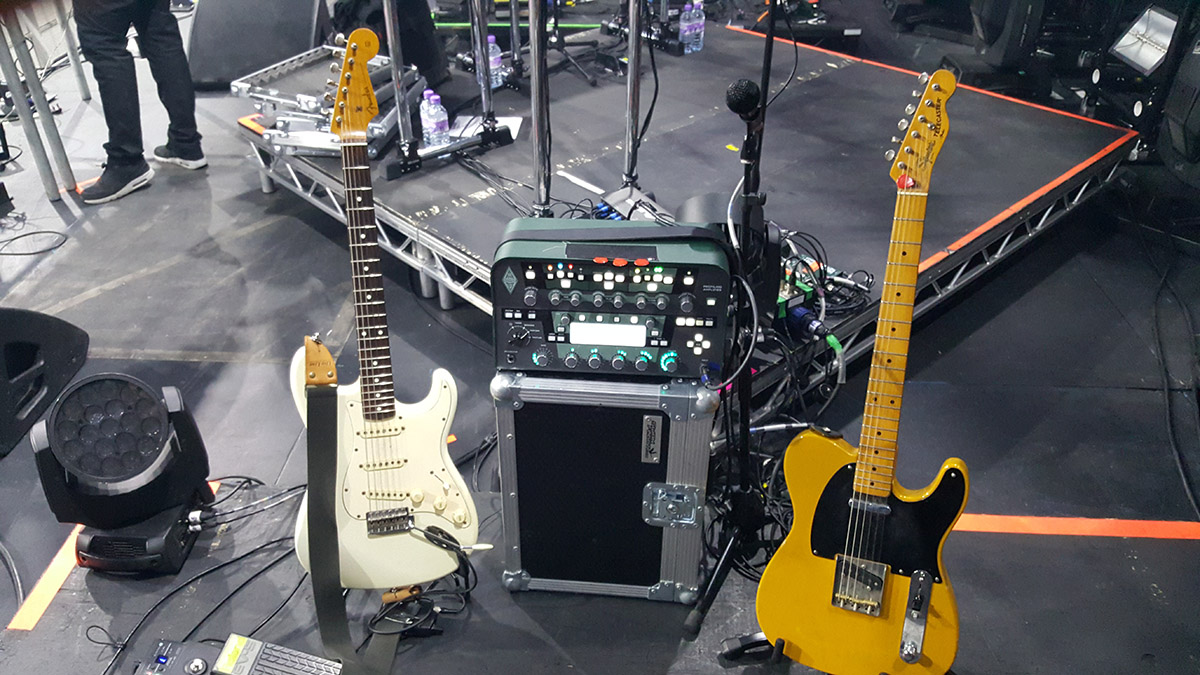
Tom Varrall - Guitar
Tom: “I’m using a Squier Telecaster from 1982 and have another Squier from 1981 - I really like those and they’re not too expensive.
“The PandaMIDI Future Impact pedal is absolutely amazing - I think it was invented by some guy in Hungary.
“It’s a bass guitar synth with four select synths that allow you to make your sounds and MIDI them into the pedal. The tracking’s amazing."
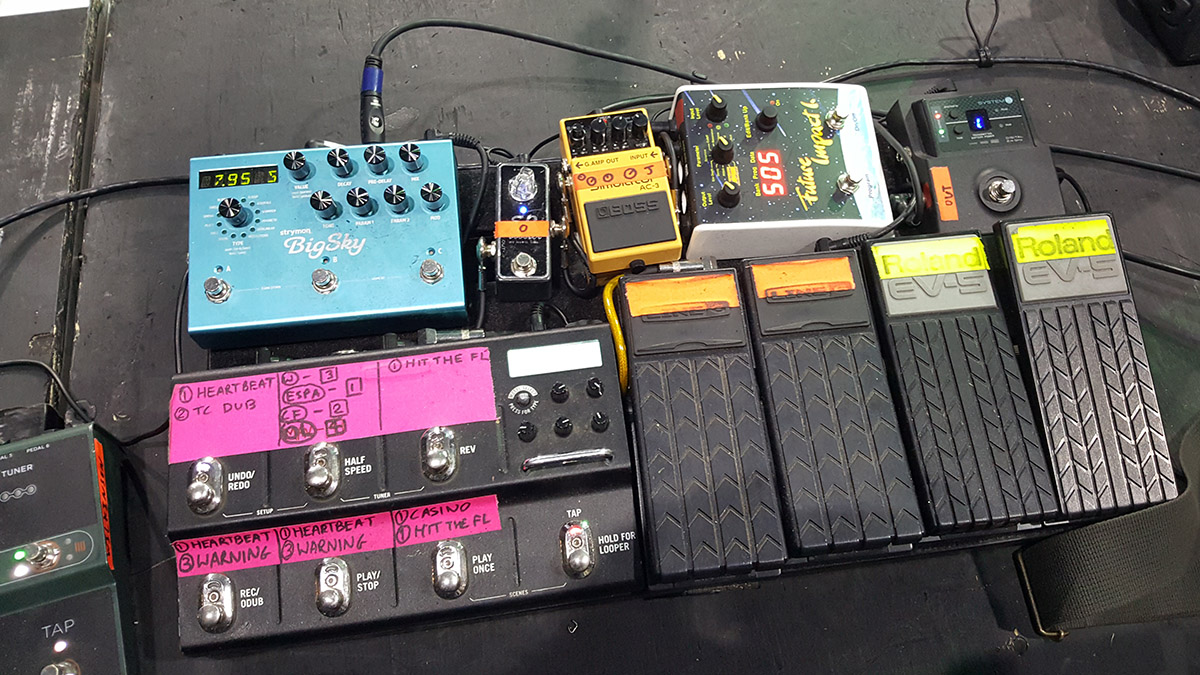
“The BOSS Acoustic Simulator works really well with the Kemper as a digital interface, and I use a wireless Audio-Technica System 10, which is a digital high-fidelity wireless system. That was a present from them - it’s super reliable and has no frequency problems.”
“I’m using a Kemper Profiling amp, and getting all my patch changes from Tom via Ableton which works really well, except there’s a limit to how much you can give it.
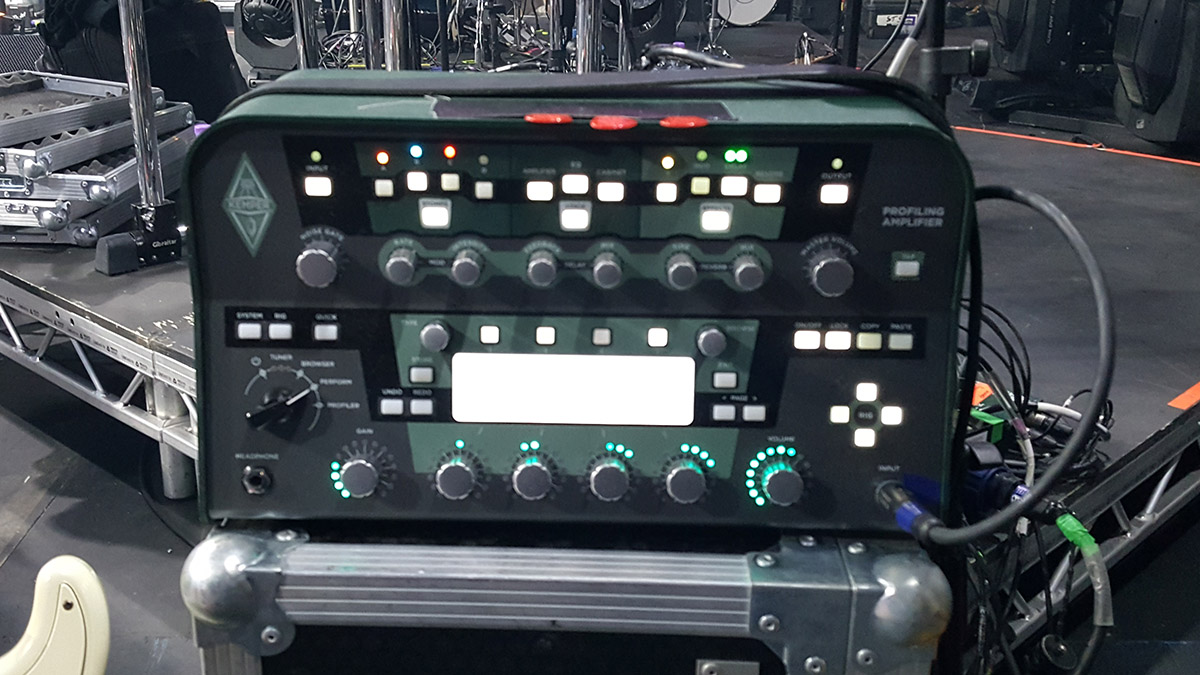
“We started to get it to do some LFO-type things and filter sweeps, but it couldn’t cope - otherwise it’s been absolutely amazing.
“There is a controller for the Kemper, but I don’t ever actually have to press it because Tom does the patch changes for me. But it’s nice to see the names of the songs and you can turn on the delay to suit your tastes as well.”